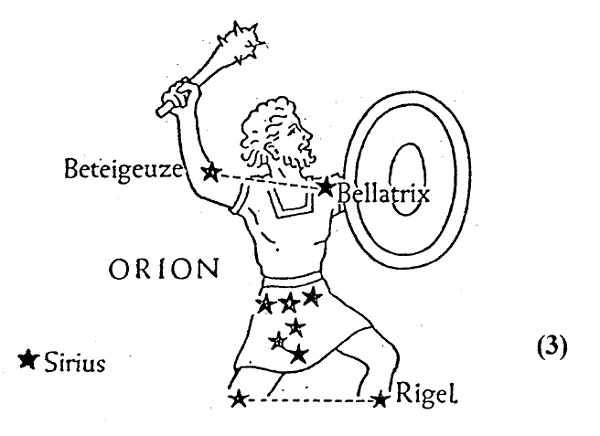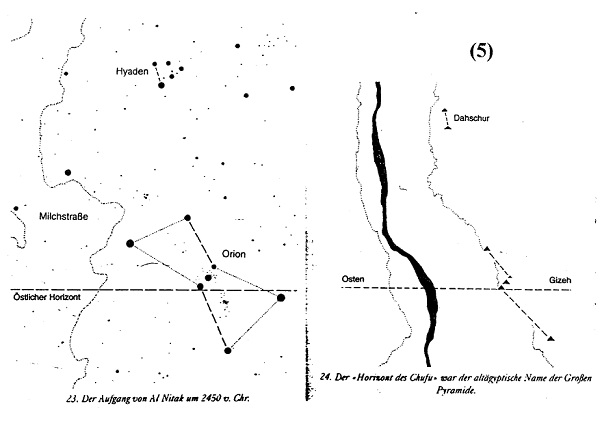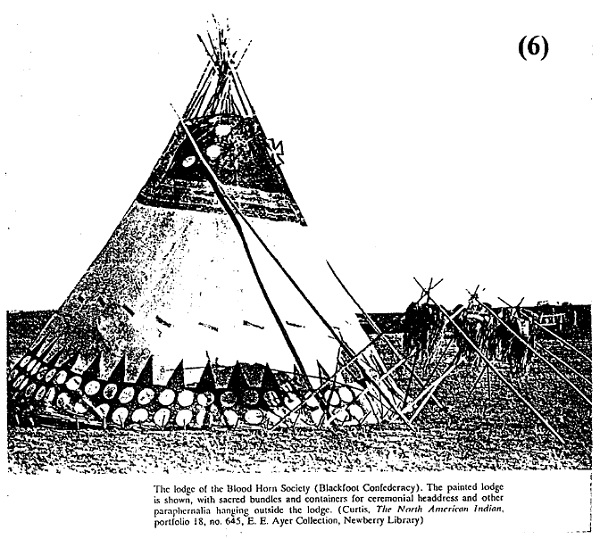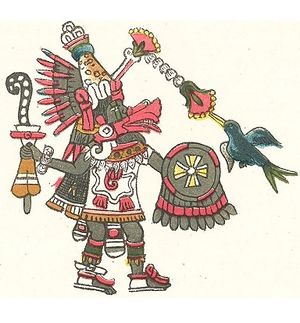The birth of Venus out of Orion (III)
Velikovsky had quoted from an ancient Chinese source that during the reign of Yahou "a brilliant star appeared out of the constellation Yin". [1] Calculations were done to figure out the time of Yahou on the bases of the constellation Niao, which supposedly was culminating at the time of the autumn equinox at sunset during the time of Yahou. Niao was assumed to be Hydra. (1950,1978:102) So I searched for Hydra in the astronomical atlas. When I looked at that celestial area I noticed Orion. If the brilliant star appeared from anywhere around here, I thought, then it probably would be easy to remember the constellation Orion as the place of emergence before any other constellation. Orion is regarded as the most beautiful and impressive constellation in the whole night sky. It is cut in half by the celestial equator, so it is the only constellation seen in the northern and southern hemisphere. Therefore it disappears in the summer from the northern skies and reappears in winter, its coming being heralded by the rising of the Pleiades. From there, on a diagonal lineup, we find the Hyades, with Aldebaran, the belt stars of Orion, and Sirius (see Fig. 1).

One day, when I compared the engravings from Largo Canyon (Fig. 2) to this astronomical chart the idea hit me: the three lines were representing the Milky Way and the hourglass symbol appeared to be the abstract form of the constellation Orion. As this hourglass symbol is interpreted in literature as Born of Water, the cultural hero of the Navaho, who is compared to Quetzalcoatl / Venus, the connection was made: The brilliant star Venus appeared out of the constellation Orion. (Collier 1949, 1962: 134; Patterson 1992: 17) When I asked the Cheyenne Blue Sky Maker Bill Red Hat about my assumption, that the hourglass symbol is representing Orion, he verified my idea. Orion is indeed symbolized by the hourglass motive, which is one of the most important signs in Amerind pictography.

My assumption was also verified by von Scheffer: "Also on Crete a lot is recounted from Orion, what always is a sign of very ancient conceptions, and should it be, that- they perceived in Orion not a man off and on, but a hatchet or a double axt (hourglass), then we would certainly be in the middle of the cults of those mysterious natives of Crete. Everywhere this island shows the oldest material of myth, as we already have heard about the youth of Zeus on the Ida Mountains of Crete" (1939: 162,181, 216). On the Mediterranean islands Zeus was called The Moisterizer or Gatherer of Clouds. Water in connection to Zeus reminds of Born of Water, Motseyoef / Venus, or Quetzalcoatl / Venus.

(Fig. 3) Orion had been thought of in mythology as a giant man and powerful hunter, the most beautiful and strongest of men. This skyman was observed carrying a club, a fur, a sword, or a star. He suffers different injuries. Orion loves beautiful women and wine. The Minotaur legend on Crete connects Taurus-Orion to the death kult of Egypt, where the main god Osiris is linked to Orion. Orion is able to walk on and through water, he controlls floods and raises mountains. This connects him to the god Thor and the giant Wate in northern mythology and christian legends as well. Orion is mentioned in the Book of Job; Nimrod of the Old Testament has been identified with him. In Babylon Marduk-Orion fights Tiamat and looses his right hand. Lefthandedness is part of mythology all over the world. Also war god Týr's right arm is eaten by the Fenris wolf. Many elements of the Orion-mythologies are found all over the world, which came into being independently. (von Scheffer 1939: 160-168, Ahlert 1954:10). It seems that all central qualities, activities, items or physical elements which are of importance for identification in iconography and mythology seemed to be already based in Orion, who is the ancient figur in primeval mythology. Venus was made of the private parts of Ouranos (Orion), Eve was made from the ribs of Adam.

The giant Sahu (Orion) is being pictured in Egypt as a walking man holding a star in his hand. Viewed from beneath he holds the star to his right side, in his right hand. But I could also define it as his left side, or left hand (Bauval, Gilbert 1994: plate 13b, 16) (Fig. 4). Now confusion seems to start with the identification of this star. In the pyramid text a star is mentioned, which it is called a: "big star, companion of Orion, who travels the (Duat) with Osiris"; or "star, which enlightens the sky"; "the king, a star, bright and travelled far"; "The brother of the( king) is the moon, the (descendent) of the (king) is the Morning Star". Seen with a Velikovskyan perspective this star can only be Venus / Osiris. Like Quetzalcoatl / Kukulkan or Motseyoef, the cultural hero Osiris gave cultur to the people, suffered a tragic death, and resurrection. (Seler: 1898: 25; Bauval 1994: 110-111)
This becoming the basis of ancient Egyptian myth and the origion of the resurrection cult around Osiris. The dead pharaos mummy, was called Osiris, and his soul was going to become a star in the Sahu / Orion region in the sky. But considering all the possibilities for incorrect interpretation and translation, I assume it has to be read correctly: Osiris becomes the star in the Sahu / Orion region. This would fit the pattern of cultural heroes transforming into the Morning Star Venus. There is no star in or around Orion which has these outstanding qualities described, certainly not Sirius. The star in question is situated in the right hand of Orion, above his head. Sirius is situated at Orions foot, on the left side. And certainly Sirius is not a star that travelled far, but Venus did.
If one reads the mythological description of Sirius with Venus in mind, it starts making sense: Sirius-Venus beauty surpasses and outshines each other star, it is the star. In Hellas and Rome admiration was mixed with fear, even horror, before this dangerous star. It stood in the sky glistening, sending out reddish lightning, apparently having bad influence on the climatic condition. In Egypt, the highest god Osiris was connected to Sirius-Venus, - which is not a big etymological step. The Egyptians identified Isis-Venus with the dog star Sirius-Venus as well, and declared Orion to be her husband. The appearence of Sirius-Venus was the highest celebration in Egypt, the people rejoiced, the priests sacrificed, and the new year started. The glowing fire of Sirius-Venus and its devastating influence on the climate was feared also in Egypt. Of Aristaios is said, that he calmed down the fiery star Maira (Maria). In the Iliad is stated: He was seen first by the old Priam's eyes, as he raged through the plain like the glowing star. (von Scheffer 1939: 178-188)
Pliny the elder (Fig. M) writes about Venus: "Beneath the sun moves a very big star whose name is Venus, with changing course and competing in names with sun and moon. When she appears early and before sun rise, she is called Lucifer, because like a second sun she brings the day earlier; when she shines after sunset, she is called Vesper, because she extends the day and takes the place of the moon. [...] Just by size she surpasses all the other stars, and her brightness is so intense, that because of her beams of light, shaddows result like from no other star" (Buch II, Abschn. VI §§ 36-37 cited in Marold, VFG 1994: 89) This triade of Venus, Lucifer and Vesper (Hesperos) seems to be at the base of all triadic/trinity conceptions and perhaps this is the key to bring some more order into the rather confusing attachment of names to heavenly bodies.
Aristaios in German translation reads der Sternenhelle, which in English might mean something like bright like the stars or light of the stars. He is married to Eos, the goddes of the morning red, who gave birth to the winds, the stars and the Morning Star. Eos drives her charriage-and-pair in front of her brother Helios, the sun. Their sister is Selene, the goddes of the moon. (Fasching 1994: 244-267) In scholarly opinion the triade of the great gods in Babylonian astronomy is formed by Venus, Moon and Sun. (B.L.van der Warden 1980:33) But, "this is only partly true. Sun and Moon were observed almost as intensely as Venus, but only she was honored as a great goddess, and feared, as she was also a war goddess" (Marold 1994: 95).
From the Near East to China, the ancients describe Venus as a second sun, a tremendous star: a light torch; Diamond, who glistens like the sun, its light intensity comparable to the rising sun; The radiant light of Venus flames from one end of the cosmos to the other; A circling star, who throws out his fire in flames. "Still in the 7th century Assurbanipal writes about Venus (Ishtar), who is dressed in flames and wears a crown of enormous radiance" (Velikovslcy 1950/1978:152). This reminds of Shiva / Venus, dancing in a circle of flames, from which again flames, energy, fire and rays radiant endlessly. (Bauer 1980: 67) Venus as a second sun is a very good explanation for the many "double sun" or "eye" motives found throughout the world.
At a time when men most likely had no clear concept about the differentiation of stars and planets in the scientific astronomical sense of today, those lights in the heavens were all stars to them, which is actually still true for quite many people of today. As the human mind back then didn't function any different to the mind of today, certainly one would consider the biggest star in size, the main king and/or queen of heaven. This makes Venus the star in the sky. Venus, the Two Faced (phased), the Morning Star and the Evening Star, the Venus trinity. Compared to a star like Venus, the sun and the moon are shrinking to a position of minor importance, especially the other visible planets, who in this analyses don't have to look or behave much different compared to today. By eye sight planet Saturn cannot be separated from the other stars, that means he is nonexistent as a planet. That's why the astronomers had no real conception of the planet before the invention of telescopes. The first telescope observations of Saturn, with a 32-time enlargement, were made by Galilei in 1609/10, who still thought of Saturn as a "triple planet". With the eyes, or binoculars Saturn's rings cannot be seen at all. In 1781 the astronomer and composer Friedrich Wilhelm Herschel discovered through his telescope a new planet behind Saturn. After some to and from it was given the name Uranus (Ouranos). (Moore 1980: 104,110)

Orion achieves even greater importance, if one considers the research of Bauval and Gilbert (1994), who presented the evidence, that the Egyptian pyramids are situated in their overall plan according to the stars in the constellation Orion, the three pyramids of Gizeh resembling the diagonal alignment of the belt stars in Orion (Fig. 5).

On the Blackfood ceremonial lodge of the Blood Horn Society (Fig. 6) the three big balls probably resemble the same Orion belt stars, especially considering the Morning Star symbol right next to them, which I tried to make more visible. On nearly all painted ceremonial Blackfoot tipis the top is painted with a broad encircling band of black, representing the night sky, on which are portrayed the sun and crescent moon, the constellations of the Seven Brothers and Lost Children (Great Bear and Pleiades), and a Maltese cross, the emblem of the Morning Star. This cross is also said to represent the Butterfly. (Mac Lintoc 1992: 218, 219) The German Iron Cross as sign for the Morning Star is widely spread throughout the Plains tribes. There is enough pictorial evidence that Venus was portrayed with one horn, too, especially Quetzalcoatl. (Patterson 1992:6) The Blood Horn Tipi of the Blackfoot might therefore just be another North American Indian ceremony which can be connected to Venus. Further research will show that many more of the North American Indian mythologies follow the known Morning Star pattern, the cultural hero turning into the Morning Star Venus. Also the cultural hero of the Wichita transformed into the Morning Star (Velikovsky 1950, 1978: 170-171). The changing positions of Orion indicated the different phases of winter to the Klamath Indians from California (Thomas in Thaler 1994:88).
Continuation
- Back to: The birth of Venus out of Orion (I)
Illustration
Fig. 1 - 6: Archive Renate Schukies

